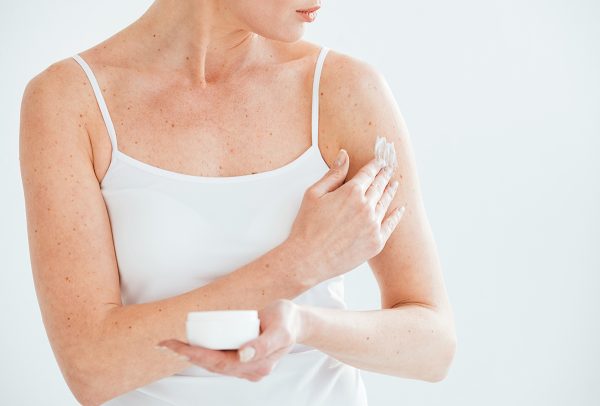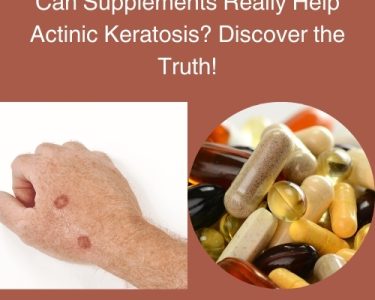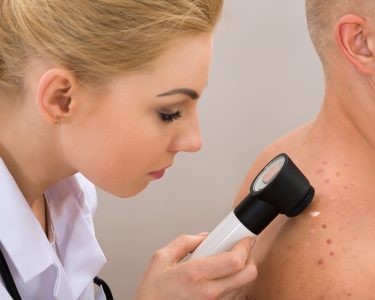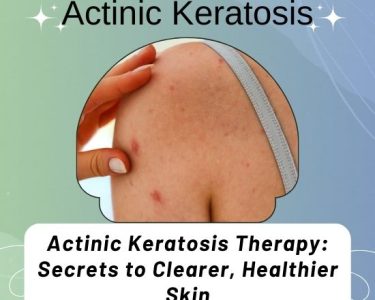Actinic Keratoses
Because they are induced by years of sun exposure, actinic keratoses (AKs) are also known as solar keratoses. These skin lesions are precancerous, meaning they have the potential to become cancerous.
How Common Is This Condition?
AKs are a prevalent dermatologic problem that affects more than 10% of dermatology consultations and costs more than $1 billion per year. Because it is a disorder linked to persistent sun exposure, they are more commonly found in middle-aged and older individuals than in children or young adults.
Related Article: Actinic Keratosis – Actinic Cheilitis
Where Do Actinic Keratoses Occur?
Because AKs are linked to persistent UV exposure, they are most commonly observed on the face, head, ears, arms and hands, and lower thighs, which are typically exposed to the sun (more frequently in women).
AKs can also cause scaling on the lips, although this is referred to as actinic cheilitis when it occurs on the lips.
Causes of Actinic Keratoses (AKs)
UVR from the sun or indoor tanning is absorbed by endogenous chromophores (DNA, melanins, and amino acids) in skin cells (keratinocytes) and destroys these structures, resulting in free oxygen radicals. Other neighbouring cellular structures are wreaked havoc by these unstable chemicals.
Related Article: Natural Herbal Treatment for Actinic Keratosis and Symptoms, Causes
Once the DNA is broken, the native keratinocyte activity becomes permanently unstable, resulting to precancerous and malignant stages. Sunscreen is an example of an exogenous (outside the body) chromophore, as it absorbs UVR to protect the skin from the elements.
Characteristic Features of Actinic Keratoses
The majority of AKs are:
- Rough
- Dry
- Scaly
- Very small to approximately the size of a quarter
- Skin colored, white, red, silvery, or brown, but with the rough scaling texture as a common feature
- Rapidly grow upward with a firm horn-like structure and are appropriately named “cutaneous horns”
Medical Treatment for Actinic Keratosis
AKs can be treated in various ways.
1. Pinpoint (or lesion-directed) destruction
Lesion-directed therapy involves destroying AKs with liquid nitrogen cryotherapy and is better suited for fewer (10) lesions.
The application of cryotherapy causes the skin to turn red for the first 24 hours, followed by the formation of a blister. AKs are supposed to be treated by an inflammatory response and subsequent healing. Pain, edoema, infection, and permanent skin discoloration are all risks associated with this operation.
2. Field therapy (cream and/or light therapy)
Field therapy comes in a variety of forms:
- 5-FU cream
- Imiquimod cream
- Ingenol mebutate gel
- Photodynamic therapy (PDT)
There is currently no consensus on the optimal AK field treatment. Each product has its own set of adverse effects, which vary by patient but commonly include redness, discomfort, itching, irritation, flaking, and scaling.
Related Article: Most Effective Treatment for Actinic Keratosis
3. Tretinoin
Topical tretinoin is another option. However, no consistent therapeutic advantage in the prevention of AKs has been demonstrated.
Before beginning therapy, talk to your doctor about the best application strategy, as each of these approaches has its own suggested application frequency and duration.
Diagnosing Actinic Keratoses
Because AKs are generally pale or skin-colored, they are difficult to spot and diagnose with a visual examination. Because of their rough texture, AKs are usually detected by feeling the skin.
AKs might be asymptomatic, but they can also be itchy or painful, leaving a raw sensation. After clearing, the lesions frequently return in the same location.
Related Article: Actinic Keratosis on the Eyelids: Protect Your Eyelids
Home Treatments for Actinic Keratoses
For the Home Treatment of Actinic Keratosis, the following home therapies have become popular. However, anecdotal data rather than scientific study supports their efficacy.
1. Apple cider vinegar
Antimicrobial and antifungal effects of apple cider vinegar have been thoroughly documented. Acetic acid is suggested to treat Actinic Keratosis by interfering with the synthesis of cytokines and proteins.
2. Coconut oil
Although coconut oil is a good moisturiser for non-acne skin, the mechanism by which it treats AK remains unknown.
3. Green tea
Green tea (both oral and topical) and tea tree oil are said to be beneficial. AKs have been treated with a variety of botanical extracts. Overall, the results were disappointing, while two extracts, birch bark and small spurge, stood out as having some positive benefits.
- Birch bark was found to be more efficacious if used in the early treatment of AKs and, in fact, was found to be as effective as cryotherapy when treating lower-grade AKs.
- Petty spurge (also known as milkweed) contains ingenol mebutate. Studies using this product found it to be highly effective against Actinic Keratosis compared to placebo, and scar formation was not noted. These studies were later confirmed in a double-blind, placebo-controlled study, and this gel was approved as a prescription drug in 2013.
Related Article: 11 Natural Treatments for Actinic Keratosis
What Is the Difference Between Actinic Keratoses and Seborrheic Keratoses?
Seborrheic keratoses are frequent benign skin lesions, whereas Actinic Keratosis are considered precancerous.
Seborrheic keratoses are more common in older people, which is why they were originally called senile keratoses, but the dermatological profession dropped the term because it signified mental frailty.
Seborrheic keratoses have a warty or “stuck-on” appearance and are brown, grey, or white in hue. Although these lesions do not have the potential to become cancerous, people do tend to get more lesions as they get older.
Are Actinic Keratoses a Cancerous Condition?
No, Actinic Keratosis are a precancerous condition rather than a cancer. Actinic Keratosis can regress, stabilise, or become malignant. They are the keratinocyte derivation of squamous cell carcinomas or basal cell carcinomas if they develop to skin cancer.
Despite the fact that AKs have a low risk of developing skin cancer (0.6 percent at one year and 2.57 percent at four years), they are frequently treated for cosmetic and medical reasons.
Final Word
Because AKs are mostly produced by prolonged sun exposure, it is critical to protect your skin from the sun’s dangerous UV rays.
Finally, the greatest therapy for AKs is to prevent them by using good sun protection, which includes using sunscreen on a regular basis and wearing protective clothing when going outside during the day.
If you get these lesions, you must seek treatment as soon as possible to prevent them from becoming malignant. In the vast majority of cases, timely medical therapy can successfully remove abnormal skin growth without causing any difficulties or posing any health hazards.




